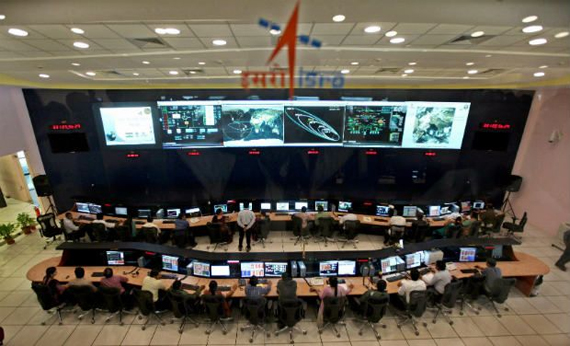
Chennai/Bangalore, Dec 1: Crossing a major milestone in the country's space history, ISRO's Mars Orbiter mission today ventured out of Earth's sphere of influence for the first time in an attempt to reach the red planet's orbit.
The critical manoeuvre to place the Mars Orbiter Spacecraft in the Mars Transfer Trajectory was successfully carried out almost an hour past midnight.
During this manoeuvre, which began at 00:49 hours, the spacecraft's 440 Newton liquid engine was fired for about 22 minutes providing a velocity increment of 648 metres/second to the spacecraft.
"Following the completion of this manoeuvre, the Earth orbiting phase of the spacecraft ended. The spacecraft is now on a course to encounter Mars after a journey of about 10 months around the Sun," the Bangalore-headquartered Indian Space Research Organization said in a statement.
ISRO performed the trans-Mars injection, a "crucial event" intended for hurling its Mars Orbiter spacecraft into the planned orbit around the Sun, marking the first step towards the 300 day voyage to reach the orbit of the red planet after crossing roughly 680 million kilometer.
"The Trans Mars Injection (TMI) operations, which began at 00.49 hours (IST) completed," ISRO said.
ISRO has planned four mid-course corrections in case of any deviation along its path to the Martian orbit.
The space agency is scheduled to make four corrections in the course of the spacecraft's voyage to Mars before it is expected to reach the orbit of the red planet in September 2014.
It had performed five orbit-raising manoeuvres on its Mars Orbiter, raising the apogee (farthest point from Earth) of the spacecraft to over 1.92 lakh kilometers, before it performed the "mother of all slingshots."
The spacecraft is being continuously monitored from the Spacecraft Control Centre at ISRO Telemetry, Tracking and Command Network (ISTRAC) in Bangalore with support from Indian Deep Space Network (IDSN) antennae at Byalalu here, the space agency added.
ISRO's PSLV C 25 successfully injected the 1,350-kg 'Mangalyaan' Orbiter (Mars craft) into the orbit around the earth some 44 minutes after a text book launch at 2.38 PM from the Satish Dhawan Space Centre at Sriharikota on November 5, marking the successful completion of the first stage of the Rs 450 crore mission.





Comments
Add new comment